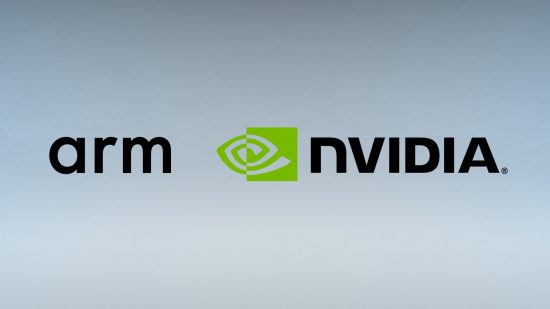Like a slowly deflating balloon, the Nvidia Arm deal finally ran out of air after multiple governments took aim at it, and Nvidia was forced to let it go. It was a predictable outcome, given that the deal had opposition from practically everyone that makes chips using Arm’s technology.
It’s not the first time Nvidia has tried to get its own CPU IP either. In the mid-2000s it approached VIA with the intent to buy its x86 license, but this was when VIA was already facing legal hurdles with Intel. Based on agreements made with Cyrix in the 90s, VIA argued it had the right to keep making x86 CPUs and use Intel’s front side bus protocols in its designs, but Intel argued otherwise.
This was around the time that AMD and ATi were tying the knot, so Nvidia felt threatened. Nvidia was also making motherboard chipsets at this point, but that dried up after Intel released its first CPUs with integrated memory controllers. From there Nvidia managed to get into servers through a partnership with IBM, bringing its NVLink tech to IBM’s Power platforms in the last decade.
However, history shows us that Nvidia likes to have control over its tech, rather than collaborating. Jensen’s ambition to have his own CPU IP kept fermenting over the years, and with Nvidia’s stock recently in the stratosphere, it had enough cash to take a pop at Arm in 2019.
Now in 2022, where does this leave Nvidia, Arm and, for us, the PC ecosystem? I suspect Nvidia will double down on its strengths – graphics, AI and networking. Inevitably it will continue to build impressive GPUs, but this isn’t a growth market, unlike AI. There is increasing pressure for Microsoft to support apps that use AI in the PC through dedicated AI accelerators.
We already have DLSS (AI-based image upscaling) in games, and RTX voice for audio, but there are also opportunities for improving the quality of webcams, streaming video, doing real-time translations, and much more – features that are already found in smartphones. If a program isn’t specifically written for Nvidia GPUs, any AI tasks currently fall back to the CPU to process. We have plenty of CPU cores these days, so it’s not really an issue, but this situation is of no value to Nvidia.
As Microsoft embraces Windows on Arm with some degree of enthusiasm, Nvidia – and others – could opt to make high-performance, custom Arm chips for laptops, or even desktop PCs, as long as the operating system evolves beyond ‘Windows on Qualcomm Snapdragon’. Apple M chips have proved that Arm CPUs can be extremely competitive at this level, and it would give the whole Intel/AMD duopoly a run for its money while also giving us much more choice for PC specs.
For Arm itself, the future is less clear. Softbank – the current owner – intends to put up an initial public offering (IPO) for it on the US Nasdaq, and it has just appointed a new CEO in the fallout from the Nvidia deal. Also, bear in mind that while Nvidia made a commitment to keep and grow UK-based jobs, Softbank has never echoed this sentiment during its ownership.
Combine this upcoming US IPO with a large contingent of Arm staff throughout the US, plus the semiconductor industry growth in places such as Texas, and the future for the Cambridge HQ starts to look uncertain. I hope Softbank, and Arm’s new CEO, Rene Haas, voices a commitment to keep Arm HQ in the UK, keeping the formula that made it successful.
Did you ever think the Nvidia Arm deal stood a chance? Let us know your thoughts on the Custom PC Facebook or Twitter pages, or join the discussion on our 350,000+ member Custom PC and Gaming Setup Facebook group. Meanwhile, follow this link for more Nvidia news.
